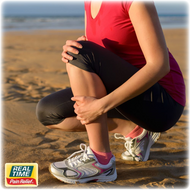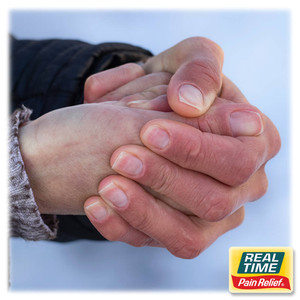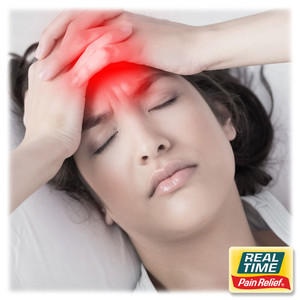Shin Splints Prevention Tips
8th Jun 2022
Shin splints, also called medial tibial stress syndrome, cause inflammation to develop in the connective tissue that attaches the muscle to the tibia bone. The tibia is the larger of the two bones in the lower leg. The front part of this bone is referred to as the shinbone. In comparison to all of the other muscles in your leg, the lower leg muscles are much smaller, which means that they can be overworked very easily.
Symptoms
Symptoms of shin splints include:
- Tenderness and soreness along the inner part of the shinbone
- Mild swelling in the lower leg
- Pain along the inner border of the tibia, where the muscle attaches to the bone
- At first, the pain from shin splints may only occur when you are physically active, but with time the pain can become continuous.
In advanced cases, the pain of shin splints not only occurs because of inflammation but also because the muscle becomes rigid and tight and begins to be pulled away from the bone. If it is not addressed, this pulling may cause the bone to bow, creating more intense pain and it can also cause microscopic tears to occur in the muscle, eventually leading to damage.
It is important to take proper measures to rehabilitate shin splints because they have the potential to cause a stress fracture in the lower leg.
What Causes Shin Splints?
Experts agree that the two main factors that lead to shin splints are excessive impact to the lower legs and overworked legs. Facets of these two issues can stem from numerous possibilities such as improper running form, inadequate foot support, heel striking (or over-striding), high arches, flat feet, imbalanced muscle strength in the primary and secondary muscles in the lower leg, and/or sudden changes in frequency, duration, or intensity of physical activity. Other factors include running on terrain that is hard, uneven, unstable, downhill, or uphill.
Beginner athletes are highly likely to suffer from shin splints because of the sudden increase in activity. If muscles are not properly strengthened, training for longer distances and increasing speed can stress the lower leg muscles. It is important to begin a strengthening and conditioning regimen prior to changing your regular exercise routine in order to prepare your muscles for the new activity. If your legs become tired or weak at any point, make sure to stop and rest.
How to Prevent Shin Splints
Even though this is a very common sports injury, it is a condition that can be cured and prevented. Here are some helpful tips to prevent shin splints from causing you pain.
1) Rest
Since the primary cause of shin splints is overuse and unnecessary stress of the tibial bones and surrounding area, giving your legs a week off can do wonders to help the area heal faster and return to normal.
2) Build Bone Density
Research has revealed that low bone density can be a factor in shin splints because impact can cause a slight bend to occur to the tibia bone. Many experts recommend taking the recommended daily value of calcium and vitamin D. A study found that this reduced the risk of developing tibial stress fractures from shin splints by 25%.
3) Wear Proper, Supportive Footwear
Make sure that your shoes are supportive and fit properly. They need to support the heel and the ball of your foot well. If you have flat feet or high arches, you may need special inserts to help with this issue.
4) Prevention Exercise Routine
Practicing a routine exercise that strenghtens specific muscles can help to prevent other issues occurring.
5) Slowly Increase Any Factors of Your Routine
It is vital to gradually build up your body’s ability to handle an increase in distance and speed.
Shin splints, also called medial tibial stress syndrome, cause inflammation to develop in the connective tissue that attaches the muscle to the tibia bone. The tibia is the larger of the two bones in the lower leg. The front part of this bone is referred to as the shinbone. In comparison to all of the other muscles in your leg, the lower leg muscles are much smaller, which means that they can be overworked very easily.
Symptoms
Symptoms of shin splints include:
- Tenderness and soreness along the inner part of the shinbone
- Mild swelling in the lower leg
- Pain along the inner border of the tibia, where the muscle attaches to the bone
- At first, the pain from shin splints may only occur when you are physically active, but with time the pain can become continuous.
In advanced cases, the pain of shin splints not only occurs because of inflammation but also because the muscle becomes rigid and tight and begins to be pulled away from the bone. If it is not addressed, this pulling may cause the bone to bow, creating more intense pain and it can also cause microscopic tears to occur in the muscle, eventually leading to damage.
It is important to take proper measures to rehabilitate shin splints because they have the potential to cause a stress fracture in the lower leg.
What Causes Shin Splints?
Experts agree that the two main factors that lead to shin splints are excessive impact to the lower legs and overworked legs. Facets of these two issues can stem from numerous possibilities such as improper running form, inadequate foot support, heel striking (or over-striding), high arches, flat feet, imbalanced muscle strength in the primary and secondary muscles in the lower leg, and/or sudden changes in frequency, duration, or intensity of physical activity. Other factors include running on terrain that is hard, uneven, unstable, downhill, or uphill.
Beginner athletes are highly likely to suffer from shin splints because of the sudden increase in activity. If muscles are not properly strengthened, training for longer distances and increasing speed can stress the lower leg muscles. It is important to begin a strengthening and conditioning regimen prior to changing your regular exercise routine in order to prepare your muscles for the new activity. If your legs become tired or weak at any point, make sure to stop and rest.
How to Prevent Shin Splints
Even though this is a very common sports injury, it is a condition that can be cured and prevented. Here are some helpful tips to prevent shin splints from causing you pain.
1) Rest
Since the primary cause of shin splints is overuse and unnecessary stress of the tibial bones and surrounding area, giving your legs a week off can do wonders to help the area heal faster and return to normal.
2) Build Bone Density
Research has revealed that low bone density can be a factor in shin splints because impact can cause a slight bend to occur to the tibia bone. Many experts recommend taking the recommended daily value of calcium and vitamin D. A study found that this reduced the risk of developing tibial stress fractures from shin splints by 25%.
3) Wear Proper, Supportive Footwear
Make sure that your shoes are supportive and fit properly. They need to support the heel and the ball of your foot well. If you have flat feet or high arches, you may need special inserts to help with this issue.
4) Prevention Exercise Routine
Practicing a routine exercise that strenghtens specific muscles can help to prevent other issues occurring.
5) Slowly Increase Any Factors of Your Routine
It is vital to gradually build up your body’s ability to handle an increase in distance and speed.
For over 20 years, families across the U.S. have turned to Real Time’s lotions and creams for PAIN RELIEF YOU CAN TRUST®. From Lifestyle Essentials, through our Nujuvena line, to Pain Relief Formulas, Real Time has you covered.
LEARN MORE





